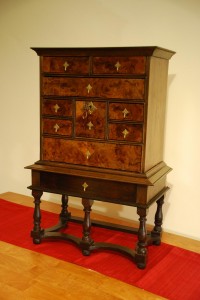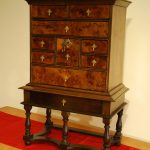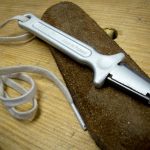We may receive a commission when you use our affiliate links. However, this does not impact our recommendations.
 Editor’s note: We’re inviting our contributing editors and authors to write blog entries for us on all things woodworking – particularly related to articles they’re writing for the magazine. (We’re developing a new blog, the Popular Woodworking Contributors’ Blog, for that purpose, but for now, you’ll find these entries on the Editors’ Blog.)
Editor’s note: We’re inviting our contributing editors and authors to write blog entries for us on all things woodworking – particularly related to articles they’re writing for the magazine. (We’re developing a new blog, the Popular Woodworking Contributors’ Blog, for that purpose, but for now, you’ll find these entries on the Editors’ Blog.)
Below, you’ll find a post from Zachary Dillinger, a talented woodworker who works only with hand tools as he makes bespoke furniture in his Michigan shop (to which he invites folks to visit). You can find out more about his work (and read his blog) at Eaton County Joinery. His William & Mary spice chest (shown at left) will be featured in an upcoming issue of the magazine. I’m delighted we’ve convinced Zach to write for us…and I’m more than a little envious of his talent. – Megan Fitzpatrick
In the 18th century, spices for flavoring food were, by default, reserved for the wealthiest of citizens. These spices were imported on merchant ships at extremely high cost, making them too expensive for the average person. It only made sense that a person with enough wealth to flavor their food would have a secure place – a spice chest– in which to store and protect those costly luxuries. The chests themselves were often elaborate status symbols, because having a spice chest meant that the family also had enough money to buy the spices to fill it.
Fast forward 250 years, to my home in Michigan. My complement of spices are kept in little glass jars behind unlocked cabinet doors. They are certainly not valuable and need no protection. After all, you can buy a 5-pound bag of sugar for about $6. So why would I build a spice chest? Well, funny story, that. It all goes back to 2010….
My wife and I took a short working vacation in May of that year. I say a “working” vacation because the point of the trip was to deliver a couple of beds I had made for a client in Washington, D.C. We decided to make Philadelphia the focus of the trip after the delivery. While there, we went to the Philadelphia Museum of Art to finally see, in person, the 1726 John Head high chest. It is one of my favorite pieces of furniture in the world. My wife said it “looks like a giant spider. Not in my house.” There went my plans to make one…
In the two years since that rejection, I’ve never lost my desire to make that high chest. And when I saw the original circa 1720 “high chest” spice chest that sold for $112,000 at auction, I knew I had my opening. A spice chest takes up almost no room, but this one has the same look and many similar features to the Head piece I so admire. So, I set off with my dividers and a folding rule to scale the piece and create my rough construction drawing.
While working on the design, I realized it would be a perfect entry in the Design Build Show 2013. I’ve never entered that show before, but I have a lot of respect for the past entrants and the show’s founder, Thomas J. MacDonald. So, I entered my reproduction for consideration – and I’ve just found out that it was accepted – you’ll be able to see it in Boston in February. And, of course, you will see details of its construction in an upcoming issue of Popular Woodworking Magazine.
Why should you make this spice chest? Easy. It is a challenging – but fun – project to complete (I did it all with hand tools), and you get practice in a lot of areas while building it. You’ve got turning, veneering, dovetailing and lots of drawer making, all wrapped into one 18″ x 26″ package. The spice chest doesn’t take a lot of material, so it is economical to build. Veneering the drawers is up to you, as is the wood choice. I chose walnut and burled walnut; the original is mahogany. It has five secret compartments and plenty of room for more, if that strikes your fancy.
I hope that this spice chest helps my wife, as well as the woodworking community, learn to love the William & Mary style as much as I do. I would absolutely love to play Savonarola and rid my house of the refinished pine, yard-sale-special dresser that currently sits in our bedroom. I feel a deep sense of shame every time I go to that dresser to put on my socks. A reproduction of the Head high chest would look so much better.
— Zach Dillinger, contributor
• Check out Charles Bender’s article on the William & Mary style in the April 2010 issue of Popular Woodworking Magazine. For step-by-step instruction on creating reproductions of iconic pieces of 18th-century pieces, get “Building 18th-century American Furniture” by Glen D. Huey. And, for a look at period work that is uniquely Southern, check out “Furniture in the Southern Style,” a book that introduces you to the history of Southern furniture, traces its influences and provides detailed measured drawings for 27 pieces from the collection of the Museum of Early Southern Decorative Arts. There’s also a CD available with the SketchUp models built to produce the illustrations in the book, and a book/CD combination at an attractive price.
Here are some supplies and tools we find essential in our everyday work around the shop. We may receive a commission from sales referred by our links; however, we have carefully selected these products for their usefulness and quality.











Looking forward to the upcoming issue of the “high” chest spice chest. What issue will it be in?